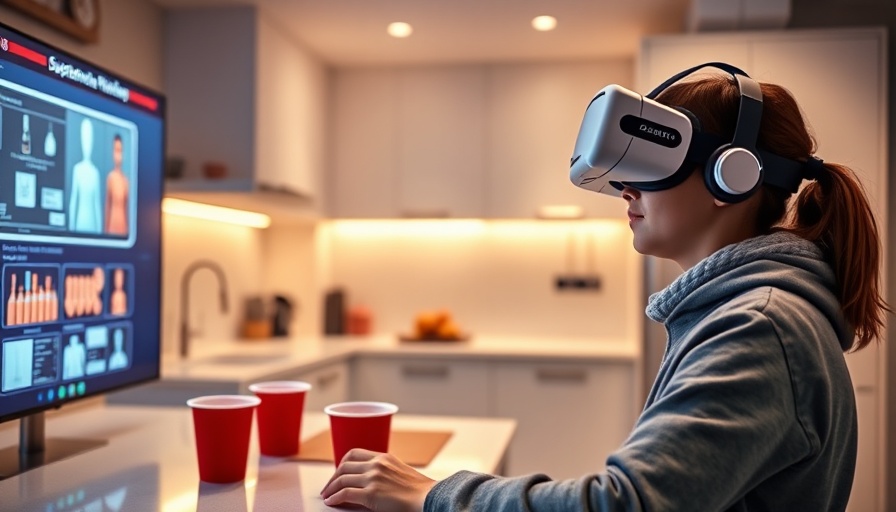
The New Frontier: Virtual Reality in Substance Misuse Prevention
As health practitioners look for innovative ways to address substance misuse and violence, virtual reality (VR) emerges as a promising ally in these efforts. Recent research from Kenneth W. Griffin and team has explored how VR can be effectively integrated into prevention programs, particularly within the college demographic, where risk factors are notably heightened. With nearly half of all college students qualifying for substance use disorders, the urgency of effective intervention has never been higher.
What Makes VR Effective in Behavioral Intervention?
VR technologies enable immersive experiences that replicate real-world scenarios. This unique feature facilitates role-playing opportunities, allowing participants to practice essential cognitive-behavioral skills in a controlled environment. The study participants engaged in various virtual social situations—such as witnessing someone being drugged at a party—where they could choose appropriate responses. This method not only enhances engagement but also provides invaluable practice in assertive communication, conflict resolution, and bystander intervention strategies.
Empirical Evidence of Success
The pilot study showed that participants exhibited improved decision-making abilities and a reduction in pro-violence attitudes following their involvement in the VR training. By supplementing traditional online learning modules based on the LifeSkills Training program with these immersive VR experiences, researchers managed to create a comprehensive approach to prevention that resonates effectively with the target audience.
Insights into Mental Health Application
It's important to note that VR has already established its efficacy in treating mental health conditions such as anxiety, PTSD, and phobias. This presents a compelling case for its application in preventive contexts as well. The potential for VR to help users better navigate complex interpersonal situations could extend beyond substance misuse into broader mental health management.
The Need for Further Research
While early findings are promising, they are merely the beginning of what researchers intend to explore. Griffin raises an essential point about the necessity for rigorous controlled trials to ascertain the long-term behavioral outcomes and impact duration of these VR interventions. Such research is crucial to solidify VR's credibility as a staple in preventive health strategies.
Bringing It All Together: Implications for Health Practitioners
For concierge health practitioners, staying informed about these technological advancements is vital. The rise of VR as a legitimate prevention tool could profoundly affect strategies employed in practice. By understanding how to integrate such technologies into patient care, practitioners can enhance their effectiveness and ultimately improve patient outcomes.
Parallels with Existing Research and Methods
The route towards adopting VR technologies might share similarities with past interventions in behavioral health realms. Historical insights reveal that not all innovations enjoy immediate acceptance in traditional medical settings. However, the continued success stories from the domain of mental health, utilizing both digital and immersive technologies, can serve as a guiding light for VR’s integration in substance misuse prevention.
As the landscape of healthcare evolves, many agree that the challenges faced today in combating substance misuse and violence require novel solutions. The adoption of VR technology appears to be a step in the right direction, aligning with the broader push towards digital transformation in healthcare practices.
 Add Row
Add Row  Add
Add 






Write A Comment